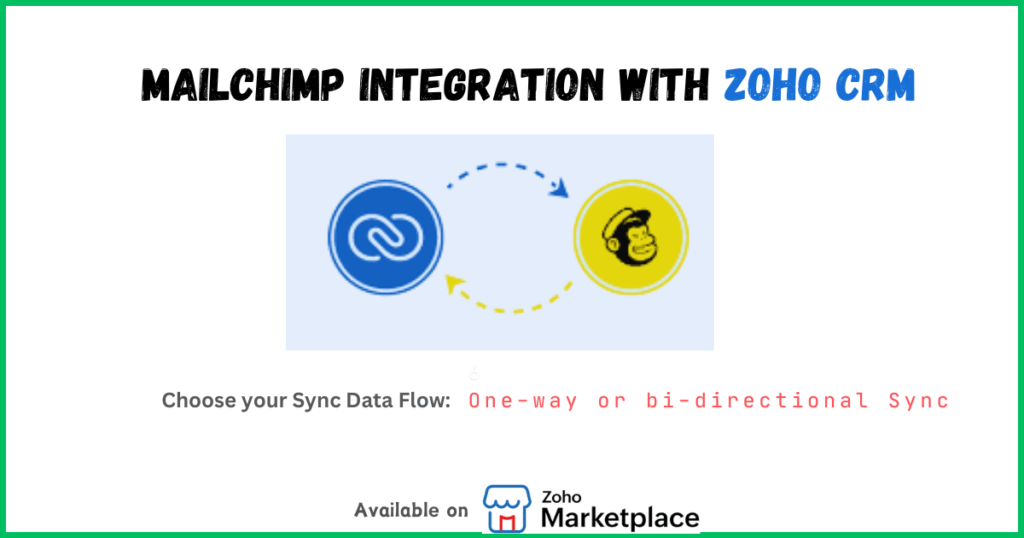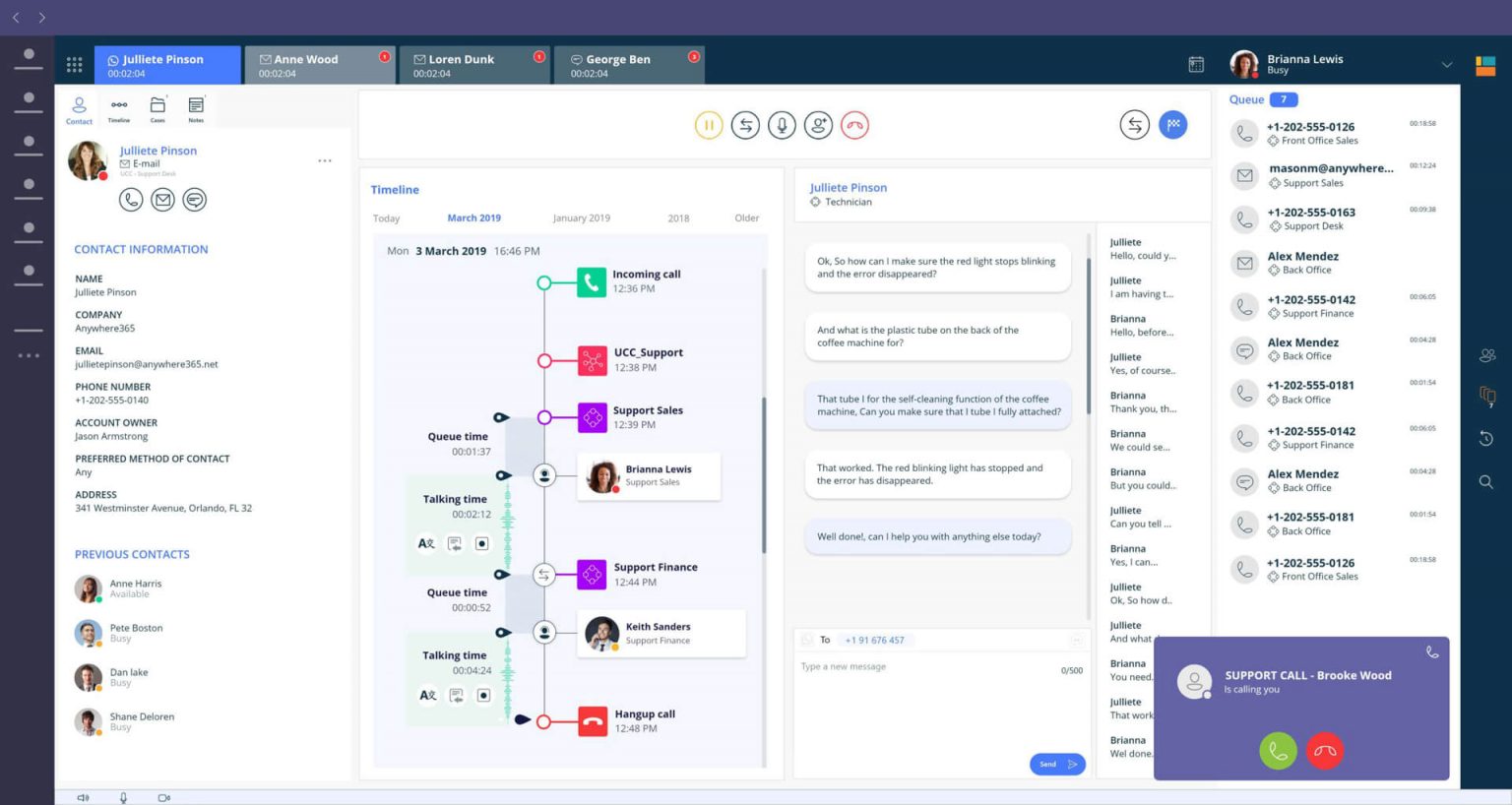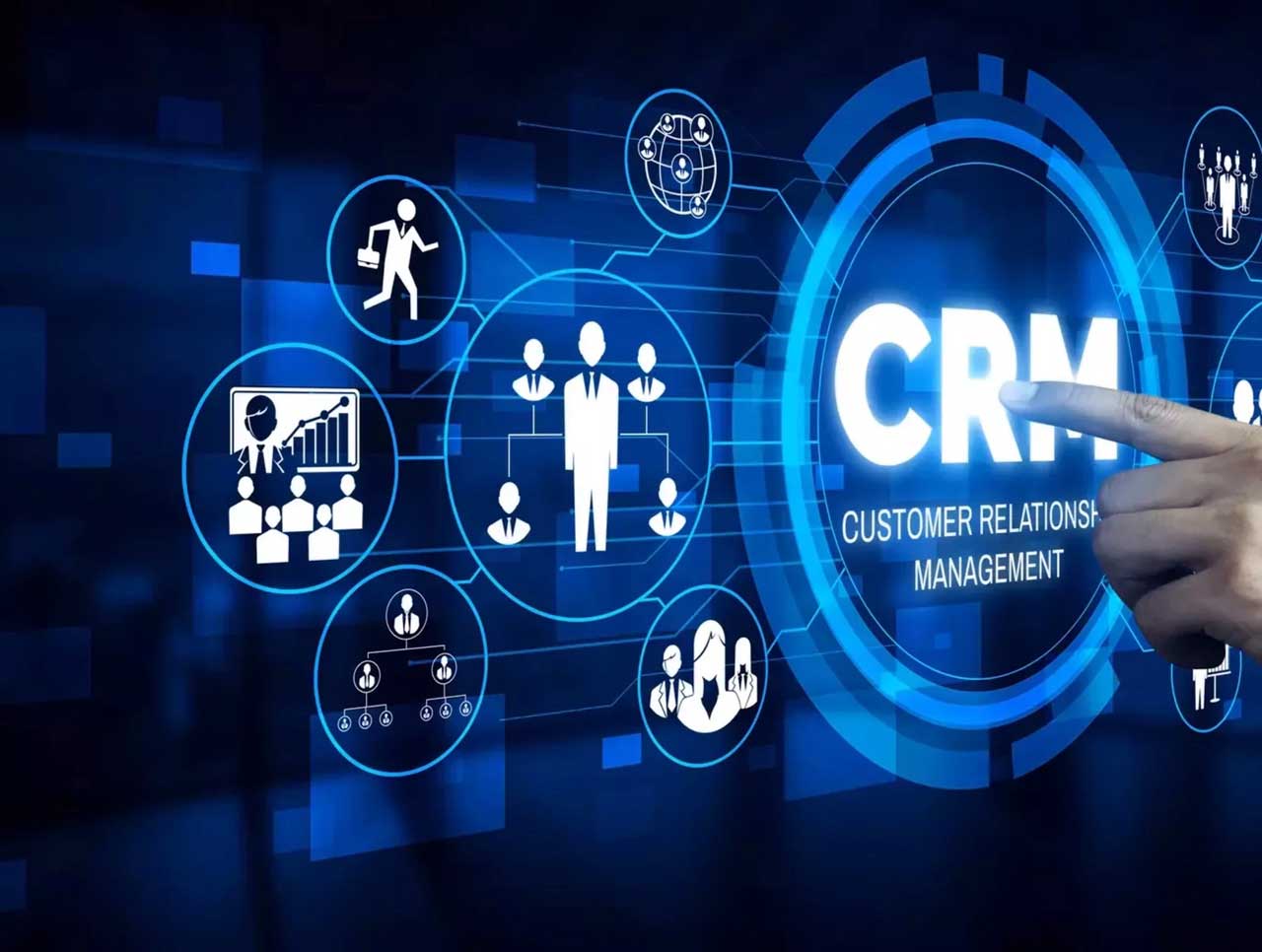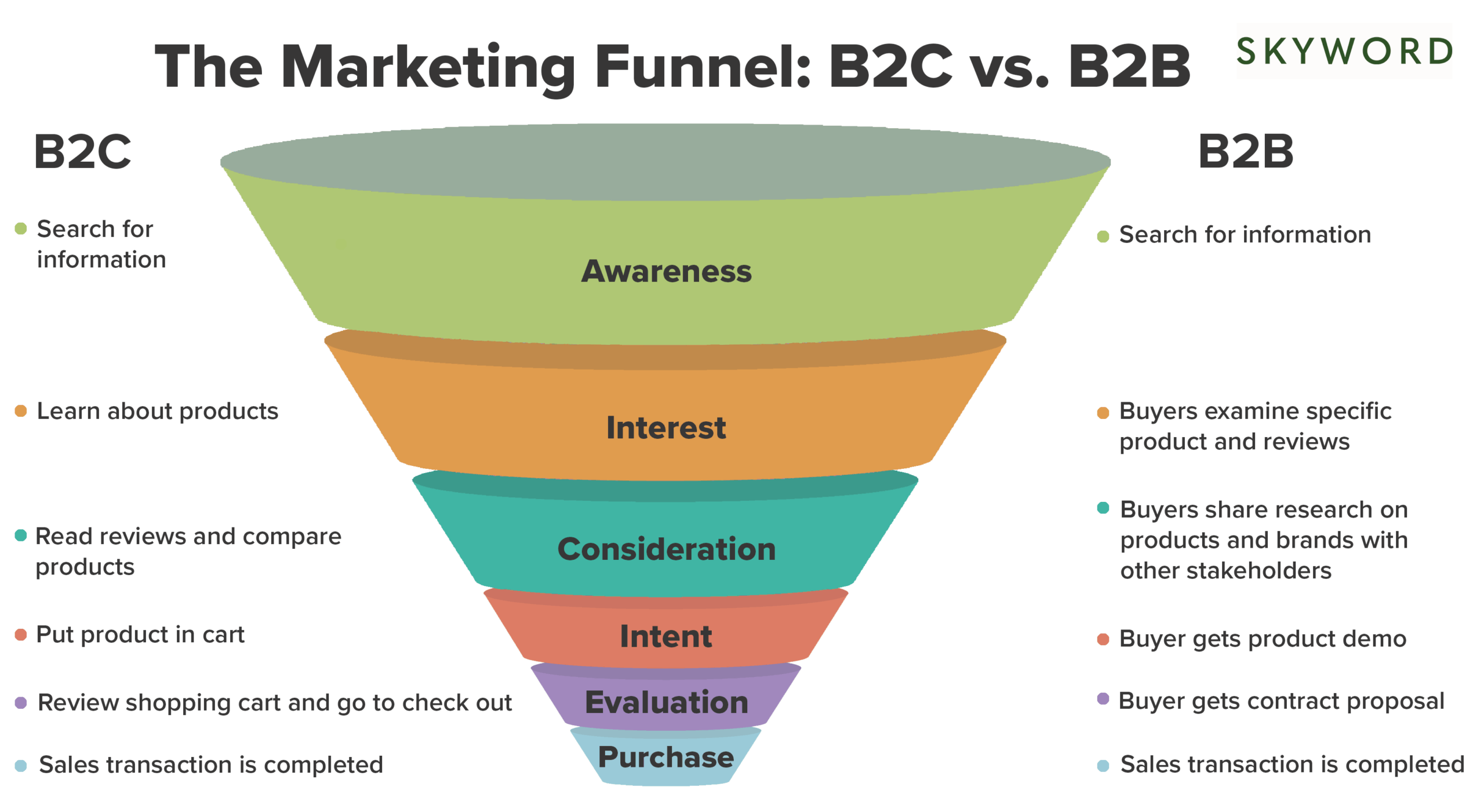
Unlocking the Power of Synergy: Why CRM Integration with Mailchimp Matters
In the dynamic world of digital marketing, staying ahead of the curve requires more than just creative campaigns. It demands a strategic blend of data-driven insights, seamless automation, and personalized customer experiences. This is where the potent combination of Customer Relationship Management (CRM) integration with Mailchimp comes into play. This integration isn’t merely a technical add-on; it’s a fundamental shift in how you approach your marketing efforts, allowing you to cultivate deeper customer relationships and drive significant business growth.
This comprehensive guide will delve into the intricacies of CRM integration with Mailchimp, exploring its benefits, the various integration methods available, and practical steps to ensure a successful implementation. We’ll dissect real-world examples, address common challenges, and equip you with the knowledge to transform your marketing strategy from reactive to proactive.
Understanding the Building Blocks: CRM and Mailchimp Explained
What is a CRM?
At its core, a CRM system is a centralized hub for managing all your customer interactions and data. It’s the digital heart of your business, providing a 360-degree view of each customer, from initial contact to ongoing engagement. Key features typically include:
- Contact Management: Storing and organizing customer information, including names, contact details, and communication history.
- Lead Management: Tracking potential customers (leads) through the sales pipeline, nurturing them towards conversion.
- Sales Automation: Automating repetitive sales tasks, such as follow-up emails and appointment scheduling.
- Reporting and Analytics: Providing insights into sales performance, customer behavior, and marketing campaign effectiveness.
Popular CRM platforms include Salesforce, HubSpot, Zoho CRM, and Pipedrive, each offering a range of features tailored to different business needs and sizes.
What is Mailchimp?
Mailchimp is a leading email marketing platform, renowned for its user-friendly interface, robust features, and extensive integrations. It empowers businesses to create and send email campaigns, automate marketing workflows, and analyze campaign performance. Key features include:
- Email Design and Templates: Creating visually appealing emails with pre-designed templates or custom designs.
- Audience Segmentation: Grouping subscribers based on demographics, interests, and behaviors for targeted messaging.
- Automation: Setting up automated email sequences, such as welcome emails, abandoned cart reminders, and lead nurturing campaigns.
- Reporting and Analytics: Tracking key metrics, such as open rates, click-through rates, and conversions.
Mailchimp’s intuitive design and powerful features make it an ideal platform for businesses of all sizes to build and nurture their email lists.
The Power of Two: Benefits of Integrating CRM with Mailchimp
The true magic happens when you connect your CRM with Mailchimp. This integration bridges the gap between customer data and marketing execution, unlocking a wealth of benefits:
Enhanced Customer Segmentation and Targeting
One of the most significant advantages is the ability to segment your audience with unparalleled precision. By syncing customer data from your CRM to Mailchimp, you can create highly targeted email campaigns based on factors such as:
- Purchase History: Send personalized product recommendations based on past purchases.
- Customer Lifetime Value (CLTV): Target your most valuable customers with exclusive offers and promotions.
- Lead Score: Nurture leads based on their engagement and readiness to buy.
- Demographics: Tailor your messaging to specific age groups, locations, and interests.
This level of segmentation allows you to deliver highly relevant content to each subscriber, increasing engagement and driving conversions.
Improved Lead Nurturing and Sales Conversion
Integrating your CRM with Mailchimp streamlines the lead nurturing process, guiding potential customers through the sales funnel with automated email sequences. You can:
- Automate Welcome Sequences: Send a series of welcome emails to new subscribers, introducing your brand and products.
- Qualify Leads: Nurture leads based on their engagement with your emails, identifying those who are most likely to convert.
- Trigger Sales Activities: Automatically notify your sales team when a lead shows a high level of interest, such as clicking on a specific link or downloading a resource.
This automated approach ensures that leads receive the right information at the right time, increasing the likelihood of conversion.
Personalized Customer Experiences
Personalization is key to creating meaningful customer experiences. CRM integration with Mailchimp empowers you to:
- Personalize Email Content: Use merge tags to dynamically insert customer names, purchase history, and other relevant information into your emails.
- Create Behavior-Based Campaigns: Trigger emails based on customer actions, such as website visits, product views, or abandoned carts.
- Deliver Targeted Recommendations: Suggest products or services based on customer preferences and past purchases.
Personalization makes your emails feel less like generic marketing messages and more like personalized conversations, fostering stronger customer relationships.
Streamlined Data Management and Reporting
Integration eliminates the need for manual data entry and ensures that your customer data is always up-to-date and accurate. You can:
- Sync Contact Data: Automatically update contact information in both your CRM and Mailchimp.
- Track Campaign Performance: Monitor email campaign performance within your CRM, gaining a holistic view of your marketing efforts.
- Generate Comprehensive Reports: Analyze the impact of your email campaigns on sales, customer engagement, and overall business performance.
This streamlined approach saves time, reduces errors, and provides valuable insights into your marketing effectiveness.
Increased Efficiency and Productivity
Automation is at the heart of CRM integration with Mailchimp, freeing up your team to focus on more strategic initiatives. You can:
- Automate Data Transfer: Eliminate the need to manually import and export data between your CRM and Mailchimp.
- Automate Email Sends: Schedule and automate email campaigns based on customer behavior and other triggers.
- Reduce Manual Tasks: Automate repetitive tasks, such as lead nurturing and customer follow-up.
This increased efficiency allows your team to work smarter, not harder, and achieve more with the same resources.
Choosing the Right Integration Method: Options and Considerations
There are several ways to integrate your CRM with Mailchimp, each with its own strengths and weaknesses. The best method for you will depend on your specific CRM, business needs, and technical expertise.
Native Integrations
Many CRM platforms offer native integrations with Mailchimp. These integrations are typically easy to set up and provide a seamless connection between the two platforms. They often include features such as:
- Contact Syncing: Automatically syncing contact data between your CRM and Mailchimp.
- Segmentation: Creating segments in Mailchimp based on CRM data.
- Automation Triggers: Triggering email campaigns based on actions in your CRM.
Native integrations are often the easiest and most reliable way to integrate your CRM with Mailchimp, especially if your CRM has a dedicated integration.
Third-Party Integration Tools
If your CRM doesn’t have a native integration with Mailchimp, or if you need more advanced features, you can use a third-party integration tool. These tools act as a bridge between your CRM and Mailchimp, allowing you to customize the integration and add additional functionality. Popular third-party integration tools include:
- Zapier: A versatile automation platform that connects thousands of apps, including CRM and Mailchimp.
- Make (formerly Integromat): Another powerful automation platform that offers a visual interface for creating complex integrations.
- PieSync: A two-way contact sync solution that keeps your contact data consistent across multiple platforms.
Third-party integration tools offer more flexibility and customization options than native integrations, but they may require more technical expertise to set up and manage.
Custom Integrations
For businesses with highly specific needs, a custom integration may be the best option. This involves developing a custom solution that connects your CRM with Mailchimp using APIs (Application Programming Interfaces). Custom integrations offer the most control and flexibility, but they also require the most technical expertise and resources. This approach is typically best suited for larger businesses with dedicated IT teams.
Choosing the Right Method: Key Considerations
When choosing an integration method, consider the following factors:
- CRM Compatibility: Does your CRM offer a native integration with Mailchimp?
- Features Needed: What specific features do you need from the integration?
- Technical Expertise: How much technical expertise do you have within your team?
- Budget: What is your budget for the integration?
By carefully evaluating these factors, you can choose the integration method that best meets your needs.
Step-by-Step Guide to CRM Integration with Mailchimp
The specific steps for integrating your CRM with Mailchimp will vary depending on the integration method you choose. However, the general process typically involves the following steps:
1. Choose Your Integration Method
Based on your CRM, business needs, and technical expertise, select the appropriate integration method (native, third-party, or custom).
2. Set Up Your CRM and Mailchimp Accounts
Ensure that you have active accounts with both your CRM and Mailchimp. If you don’t already have them, sign up for accounts and configure your basic settings.
3. Connect Your Accounts
Follow the instructions for your chosen integration method to connect your CRM and Mailchimp accounts. This may involve authorizing the integration, entering API keys, or configuring settings.
4. Map Your Data Fields
Map the data fields in your CRM to the corresponding fields in Mailchimp. This ensures that your data is synced correctly between the two platforms. This step is crucial for accurate segmentation and personalization.
5. Configure Your Settings
Configure the settings for your integration, such as:
- Data Sync Frequency: How often you want your data to sync (e.g., real-time, hourly, daily).
- Segmentation Rules: Define the rules for segmenting your audience in Mailchimp based on CRM data.
- Automation Triggers: Set up triggers for automated email campaigns based on actions in your CRM.
6. Test Your Integration
Thoroughly test your integration to ensure that your data is syncing correctly and that your automation workflows are working as expected. Send test emails and monitor the results.
7. Launch Your Integration
Once you’ve tested your integration and are satisfied with the results, launch it and start using it to power your marketing efforts.
8. Monitor and Optimize
Continuously monitor the performance of your integration and make adjustments as needed. Analyze your campaign results, identify areas for improvement, and optimize your settings to maximize your ROI.
Real-World Examples: CRM Integration in Action
Let’s explore some real-world examples of how businesses are leveraging CRM integration with Mailchimp to achieve their marketing goals:
Example 1: E-commerce Business
An e-commerce business uses its CRM to track customer purchase history and CLTV. They integrate their CRM with Mailchimp to:
- Send Personalized Product Recommendations: Based on past purchases, they send targeted emails recommending related products.
- Offer Exclusive Discounts: They offer exclusive discounts to their high-CLTV customers, rewarding their loyalty.
- Automate Abandoned Cart Reminders: They automatically send abandoned cart reminders to customers who left items in their shopping cart.
This integration has resulted in a significant increase in sales and customer retention.
Example 2: SaaS Company
A SaaS company uses its CRM to track lead engagement and sales pipeline stages. They integrate their CRM with Mailchimp to:
- Nurture Leads: They send automated email sequences to nurture leads based on their engagement with their website and content.
- Qualify Leads: They use lead scoring to identify leads who are most likely to convert and pass them on to their sales team.
- Send Onboarding Emails: They send automated onboarding emails to new customers, helping them get started with their product.
This integration has improved lead conversion rates and customer satisfaction.
Example 3: Non-Profit Organization
A non-profit organization uses its CRM to track donor information and donation history. They integrate their CRM with Mailchimp to:
- Send Personalized Thank-You Emails: They send personalized thank-you emails to donors, acknowledging their contributions.
- Segment Donors: They segment donors based on their donation history and interests.
- Promote Fundraising Campaigns: They promote fundraising campaigns to specific donor segments based on their interests and giving history.
This integration has increased donor engagement and fundraising success.
Addressing Common Challenges and Troubleshooting Tips
While CRM integration with Mailchimp offers numerous benefits, it’s essential to be aware of potential challenges and how to overcome them:
Data Sync Issues
Data sync issues can occur if there are errors in your data mapping or if your CRM and Mailchimp accounts are not properly connected. To troubleshoot data sync issues:
- Verify Your Data Mapping: Double-check that your data fields are mapped correctly between your CRM and Mailchimp.
- Check Your Connection: Ensure that your CRM and Mailchimp accounts are still connected and that the integration is active.
- Review Your Sync Frequency: Make sure that your data sync frequency is appropriate for your needs.
Segmentation Problems
Segmentation problems can arise if your CRM data is not properly structured or if your segmentation rules are not configured correctly. To troubleshoot segmentation problems:
- Review Your CRM Data: Ensure that your CRM data is accurate, complete, and properly formatted.
- Check Your Segmentation Rules: Verify that your segmentation rules are accurate and that they are targeting the correct audience segments.
- Test Your Segments: Send test emails to your segments to ensure that they are receiving the correct content.
Automation Errors
Automation errors can occur if your automation workflows are not configured correctly or if there are errors in your email content. To troubleshoot automation errors:
- Review Your Automation Workflows: Carefully review your automation workflows to ensure that they are configured correctly.
- Test Your Emails: Send test emails to yourself to ensure that your email content is accurate and that your links are working.
- Monitor Your Automation Performance: Monitor the performance of your automation workflows and make adjustments as needed.
Compliance Considerations
It’s important to comply with all relevant data privacy regulations, such as GDPR and CCPA. When integrating your CRM with Mailchimp, you must:
- Obtain Consent: Obtain explicit consent from your subscribers before sending them marketing emails.
- Provide Opt-Out Options: Provide clear and easy-to-use opt-out options in your emails.
- Protect Customer Data: Implement appropriate security measures to protect customer data.
Future Trends: The Evolution of CRM and Email Marketing
The landscape of CRM and email marketing is constantly evolving. Here are some future trends to watch out for:
- AI-Powered Personalization: Artificial intelligence (AI) will play an increasingly important role in personalizing email content and automating marketing workflows.
- Hyper-Personalization: Businesses will strive to deliver even more personalized experiences, tailoring their messaging to individual customer preferences and behaviors.
- Omnichannel Marketing: CRM and email marketing will become increasingly integrated with other marketing channels, such as social media and SMS, to create a seamless customer experience.
- Focus on Customer Experience (CX): Businesses will prioritize customer experience, using CRM and email marketing to build stronger customer relationships and drive loyalty.
Staying informed about these trends will enable you to adapt your marketing strategy and stay ahead of the competition.
Final Thoughts: Embracing the Power of Integration
CRM integration with Mailchimp is more than just a technical exercise; it’s a strategic imperative for businesses that want to thrive in today’s competitive market. By leveraging the power of integration, you can unlock a wealth of benefits, including enhanced customer segmentation, improved lead nurturing, personalized customer experiences, streamlined data management, and increased efficiency.
This guide has provided you with a comprehensive overview of CRM integration with Mailchimp, including the benefits, integration methods, implementation steps, real-world examples, and troubleshooting tips. By following the guidance provided, you can successfully integrate your CRM with Mailchimp and transform your marketing strategy from reactive to proactive, ultimately driving significant business growth. Take the leap, embrace the power of integration, and watch your marketing efforts soar!


